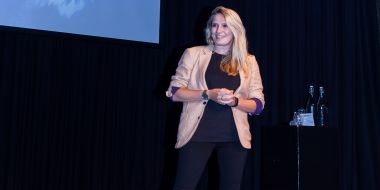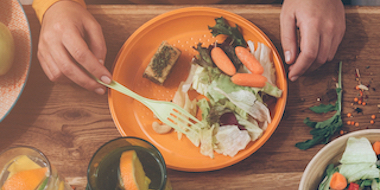Blockchain
Chocolate – much more than a matter of good taste
20/12/2018 | Written by: Anne-Sophie Verdonck
Categorized: Blockchain
Share this post:
Whenever there is a moment to celebrate, or when we want to show our beloved ones our special attention – no doubt, tasty chocolate is the first and best choice. These high quality cacao products may be made in Belgium or the Netherlands. But an extensive chain of production and processing precedes the final product. Thanks to IBM Food Trust, consumers may gain more insight into the ingredients and the creation of food and snacks. Blockchain technology does the job.
Transparency is important for you in a time when you treat your friends with those delicious Belgian pralines or tasty chocolate. Also for the specialized producers who want their quality to be recognized and share their dedication in delivering the best products. This is about their knowledge and craftsmanship. About the quality of ingredients used. This way they demonstrate that the cocoa production is sustainable, with respect for the environment and the well-being of people. Blockchain technology offers them the opportunity to do exactly this.
Food provenance
IBM Food Trust uses blockchain technology to create unprecedented visibility and accountability in the food supply chain. This unique network connects growers, food processors, distributors, and retailers through a permissioned, permanent and shared record of relevant production and supply chain data.
The initiative relates not only to food safety. It also touches food freshness, fraud, waste, sustainability and more. In the case of chocolate, it is also about food provenance. What are the ingredients? Where and under what conditions has it been produced? How sustainable is the production? And so on.
The technology itself is available via the cloud as a Software as a Service (SaaS) offering. While all participants of the production chain send their data to the IBM Food Trust network, each participant decides who has access to which of their data. A farmer or grower has the choice to only make certain sensitive data transparent to his direct buyer, while other information is available over the entire chain.
Onboarding data
To embark stakeholders in this transparency journey, you need teamwork. Get different companies around the table and put the data of the products in the system – starting with the data of a few.
How you put the data on the blockchain depends on the size, characteristics and maturity of the company. Larger organizations may have the data available in their transactional systems, so the information can be loaded up automatically though API. Midsize companies can upload spreadsheets or even enter data manually. Small farmers can use mobile applications to load their data in the IBM Food Trust environment.
End-to-end insight
In addition to information on food quality and provenance, the information powering IBM Food Trust can be used to optimize the food ecosystem. By putting this essential data on the system, everyone gets a good view on when your product is where in which stage of production or transport. This gives partners an extended end-to-end insight on what happens within the supply chain. With this information they can optimize their stock, their own internal processes and decisions.
Consumer benefit
Ultimately in the shop, the origin of a specific product can be made visible by scanning a barcode or QR code using an application on a mobile phone. Information visible to customers could include any certificates that indicate natural ingredients, lack of pesticides, sustainable growth, and more.
So when I buy excellent pralines in Belgium or in the Netherlands, I want to know where the chocolate is coming from. Not only because of the taste, but also because I want to buy sustainable products. That means more than just a logo on the package. As this information becomes essential for customers, it will also be valuable for companies affiliated with IBM Food Trust. Download here your overview of IBM Food Trust™, a collaborative solution created to efficiently and securely trace food during each step of the food supply.

Blockchain Food Trust Sales Europe and Middle East Africa at IBM
Surfing and Blockchain; what do they have in common?
by LARA PLANDSOEN Surfing is one of the most amazing sports in the world. There is no better feeling than when I manage to catch that perfect wave and ride it for what feels like an eternity. All the way to the beach, sun in my face, wind in my hair. Interestingly, surfing is also […]
Hoe creëren we een veiligere supplychain die voedselverspilling tegengaat?
Het is een vraag die alsmaar belangrijker wordt in de strijd om duurzaamheid. Blockchain, een systeem dat data beschermt tegen manipulatie, is een eerste stap naar meer transparantie. Het wordt alsmaar drukker op onze planeet. Over 5 jaar zal het aantal mensen op aarde de 8 miljard overschrijden. En er wordt verwacht dat onze populatie […]
Waarom een digitale transformatie begint met workflows die mensen en technologie samenbrengen.
Bedrijfsproblemen zouden niet eenvoudig opgelost kunnen worden — als ze überhaupt al opgelost konden worden. Een van ‘s werelds grootste bedrijven uit de voedings- en drankenindustrie had een proces nodig om de verkoopresultaten te meten en snel nieuwe oplossingen in hun portfolio met 200 merken door te voeren. Op andere plaatsen in Europa probeerden […]


